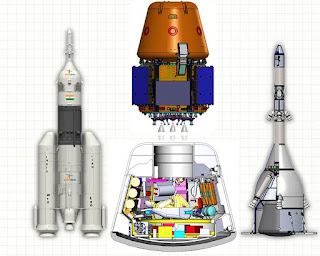Exploring the Future: What to Expect from ISRO's Chandrayaan 4 Mission

The Chandrayaan 4 Mission: A New Era in India's Space Exploration Chandrayaan 4 mission The Indian Space Research Organisation (ISRO) is gearing up for its ambitious Chandrayaan-4 mission, scheduled for launch in 2027. This mission aims to build on the successes of its predecessors, Chandrayaan-1 , Chandrayaan-2 , and Chandrayaan-3 , by not only achieving a soft landing on the Moon's south pole but also collecting and returning lunar samples to Earth. This will mark India's first attempt at a lunar sample return mission, placing ISRO among the select group of space agencies that have successfully brought extraterrestrial material to Earth. Mission Objectives and Strategy The primary objectives of the Chandrayaan-4 mission are to achieve a safe and gentle landing on the lunar surface, collect and store lunar samples, lift off from the Moon's surface, dock and undock in lunar orbit, transfer samples between spacecraft modules, and return the collected samples safely to...




